Gaza faces a catastrophic supply shortage.
Five months into the conflict, the deficit between the volume of all supplies, including food and medical necessities, that would have entered the Gaza Strip if not for the war and what has actually been received has reached at least half a million tons.
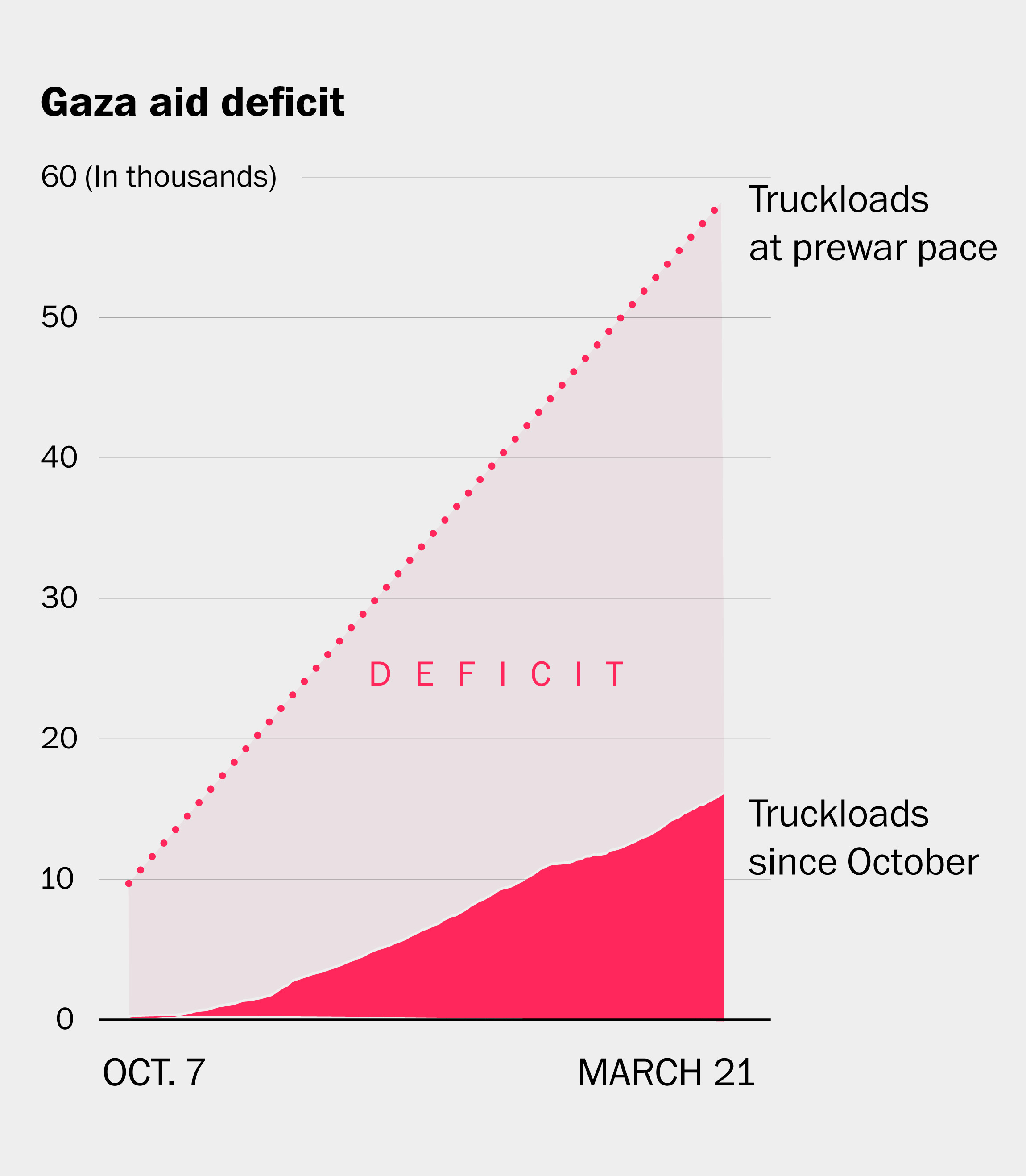
Visualizing Gaza’s aid shortage as ‘man-made’ famine looms
The enclave has long been dependent on hundreds of truckloads of aid imports per day, under strict regulations imposed by Israel and Egypt. Imports accounted for two-thirds of food consumption in Gaza as of 2022, according to World Bank estimates.
Since Israel’s invasion in response to the Oct. 7 Hamas attack, the stream of trucks has dwindled to a trickle, reaching Gaza through only a few checkpoints, subject to strenuous Israeli inspections and beset by logistical logjams and security concerns.
Israel maintains that it does not restrict aid, but aid organizations and governments, including that of the United States, have applied mounting pressure on it to facilitate the flow of trucks, and have undertaken elaborate plans to deliver aid by air and sea — methods that are far less efficient than by land.
These aid deliveries, however high-profile, are a long way from meeting Gaza’s basic requirements: Even under optimistic scenarios, they would be unlikely to match prewar figures, let alone to meet the heightened level of need after more than five months of conflict, experts say.
“Aid shipments need to increase at least tenfold,” said Rabih Torbay, president of the aid organization Project Hope.
Up to half of Gaza’s population faces starvation between now and July, according to recent estimates by global emergency experts. “This is an entirely man-made disaster,” United Nations Secretary General António Guterres said this month.
Gaza has no airport and no working port because of Israeli restrictions. Before the war began, goods entered the Strip by truck: most via Kerem Shalom, a crossing that allows access to both Israel and Egypt, and some via Rafah, directly from Egypt to southern Gaza.
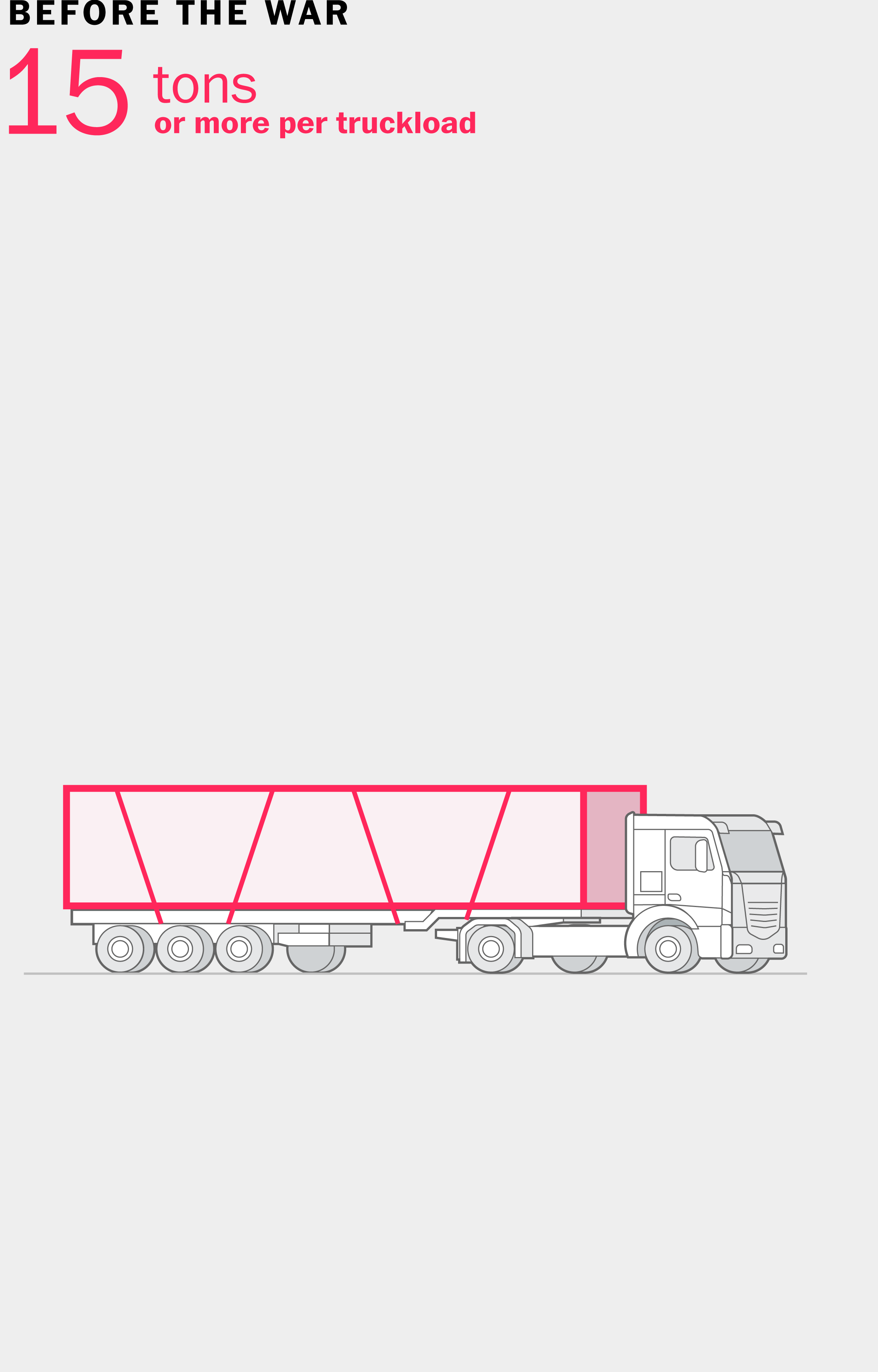
The trucks vary in size, with some capable of carrying more than 25 tons. Trucks entering Gaza since Oct. 7 have carried an average of 15 tons of aid, according to data provided separately by the Israeli government and the United Nations Relief and Works Agency. A single ton of food aid can consist of well over 1,000 meals.
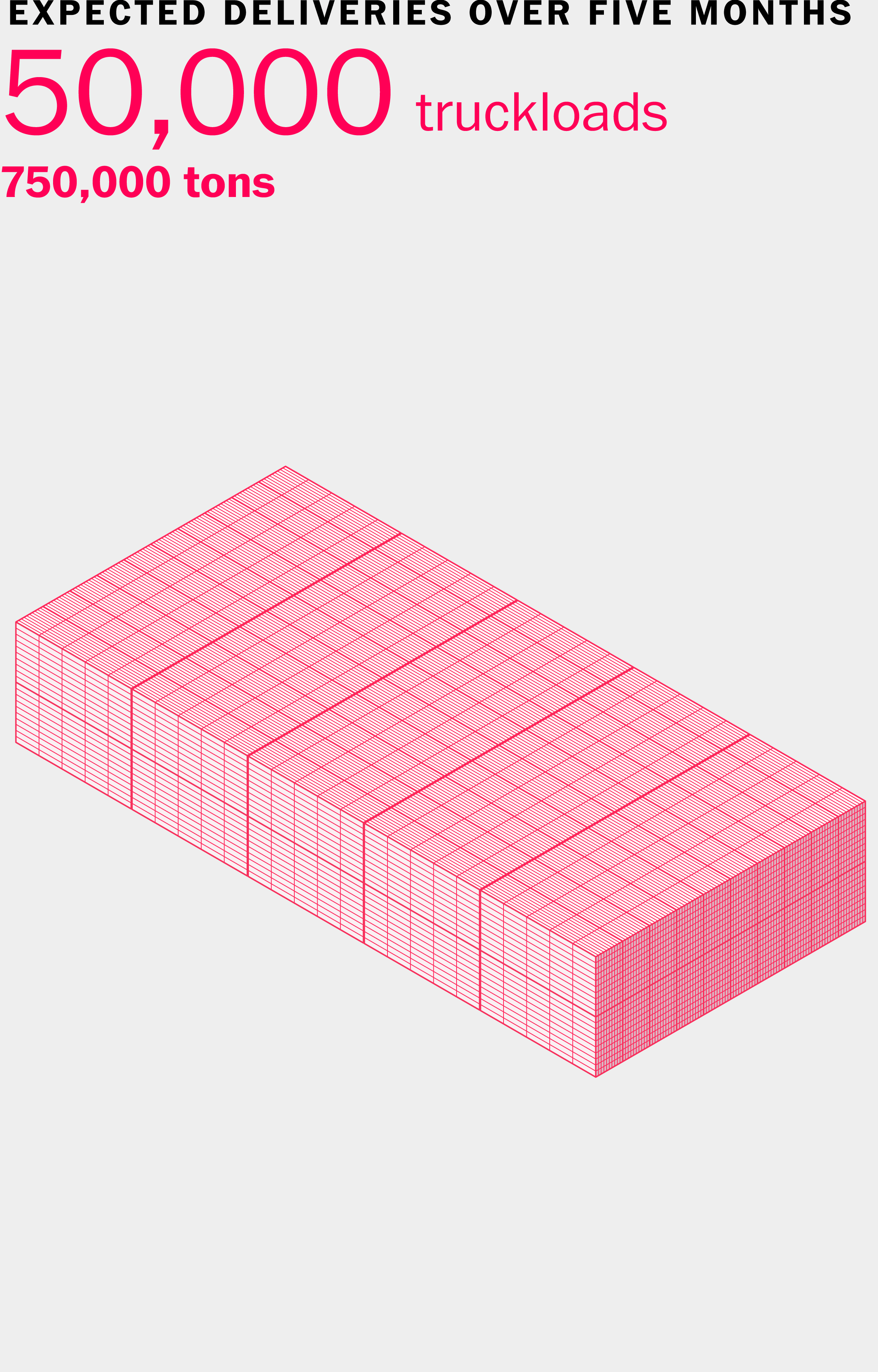
An average of 500 trucks would enter each working day before the war, or roughly 10,000 trucks a month, according to the United Nations Office for the Coordination of Humanitarian Affairs. The prewar daily average weight of goods on working days was about 7,500 tons.

Since late October, when Israel reopened a checkpoint to Gaza, the number of trucks entering the Strip has been roughly a third of its prewar average. Although the checkpoints are now open every day of the week, the volume of supplies appears to have fallen to roughly 1,500 tons a day.
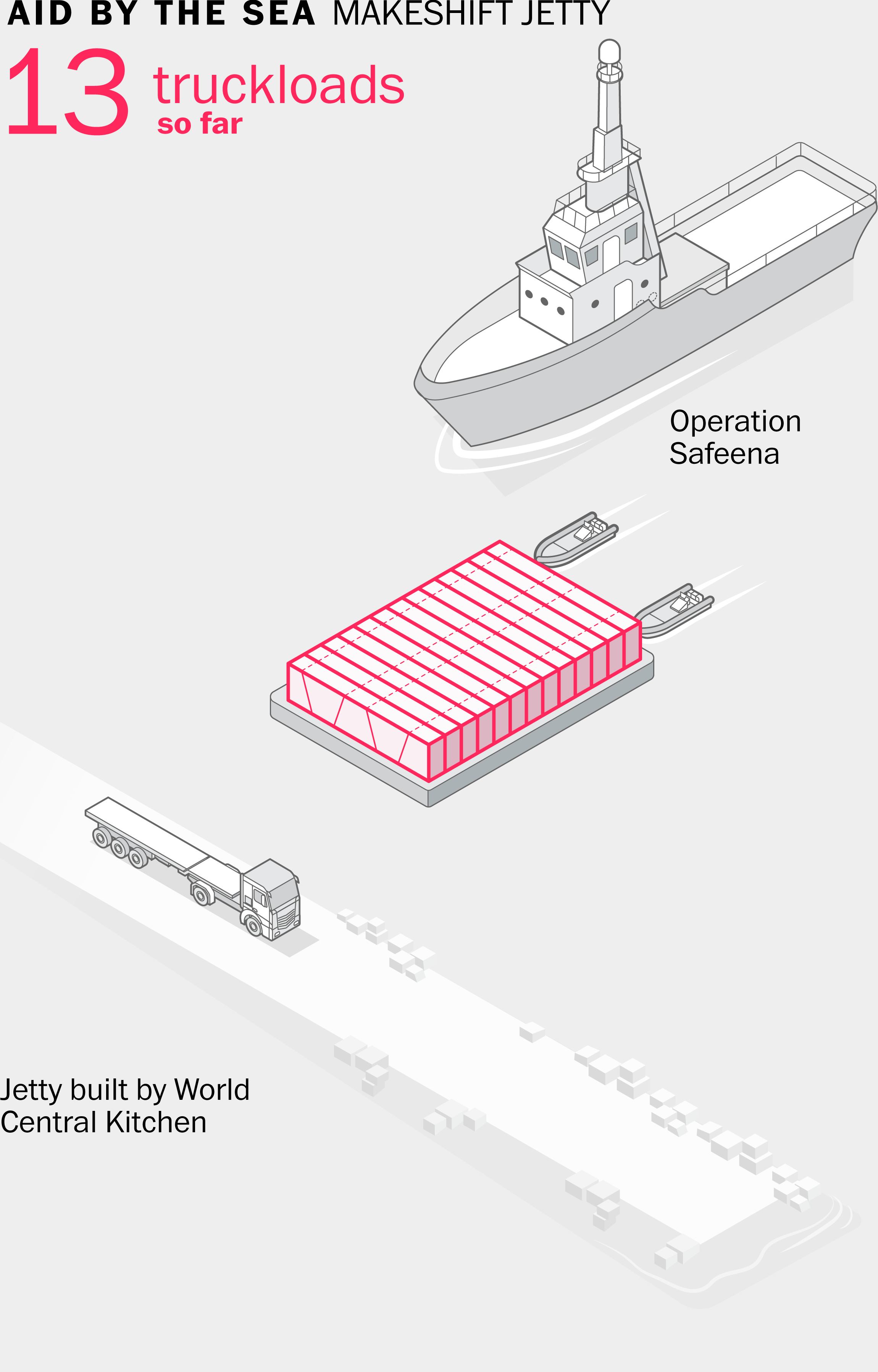
With roads blocked, aid groups have taken to the sea. This month, aid groups World Central Kitchen and Open Arms delivered 200 tons of food and water by sea via a barge pushed toward a makeshift jetty.
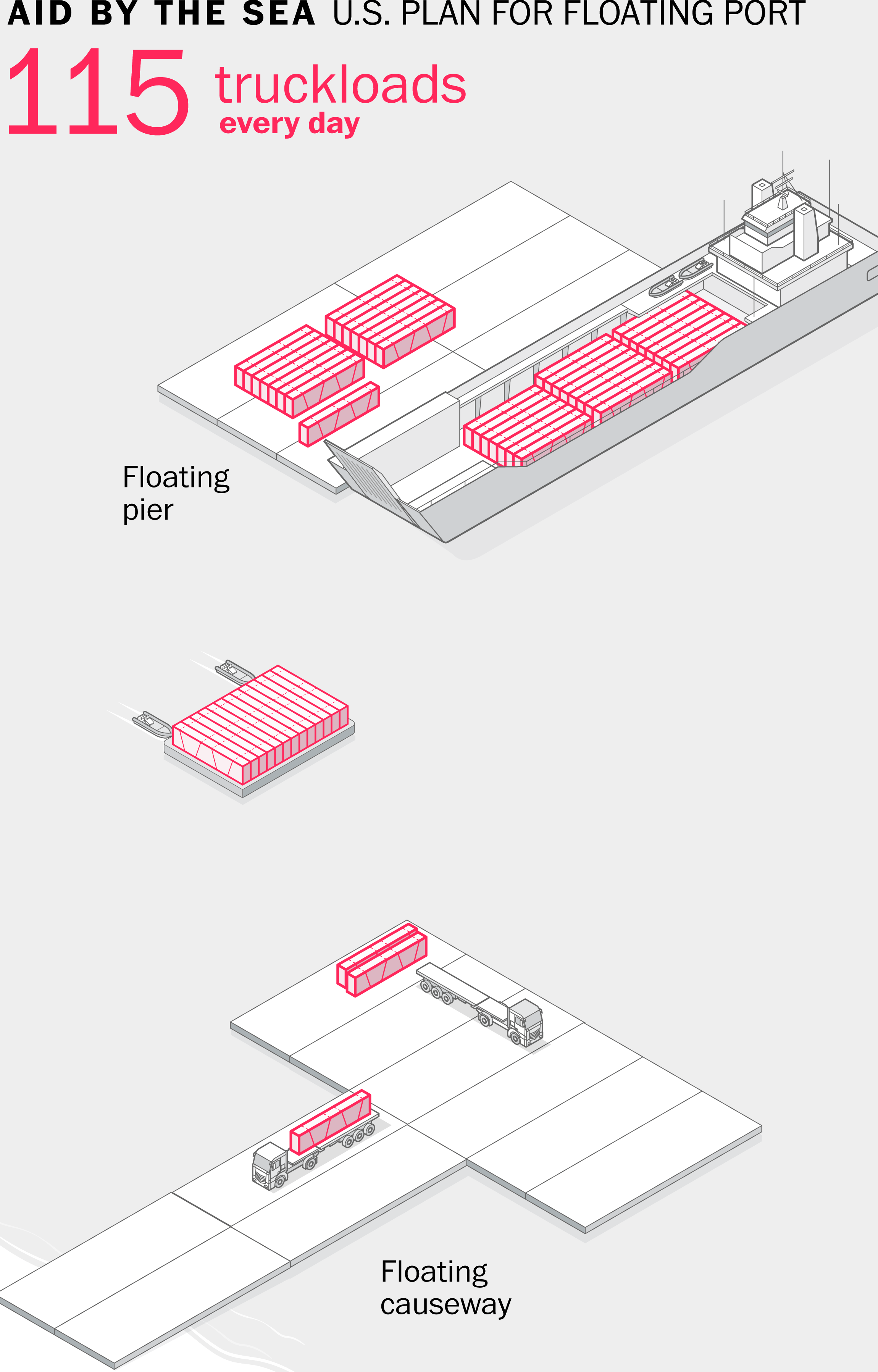
The United States has announced a more ambitious maritime plan, which involves a floating pier and an 1,800-foot-long causeway, which are not yet in place. A group of logistics support vessels and barges are to help transport the aid from the pier to the causeway.
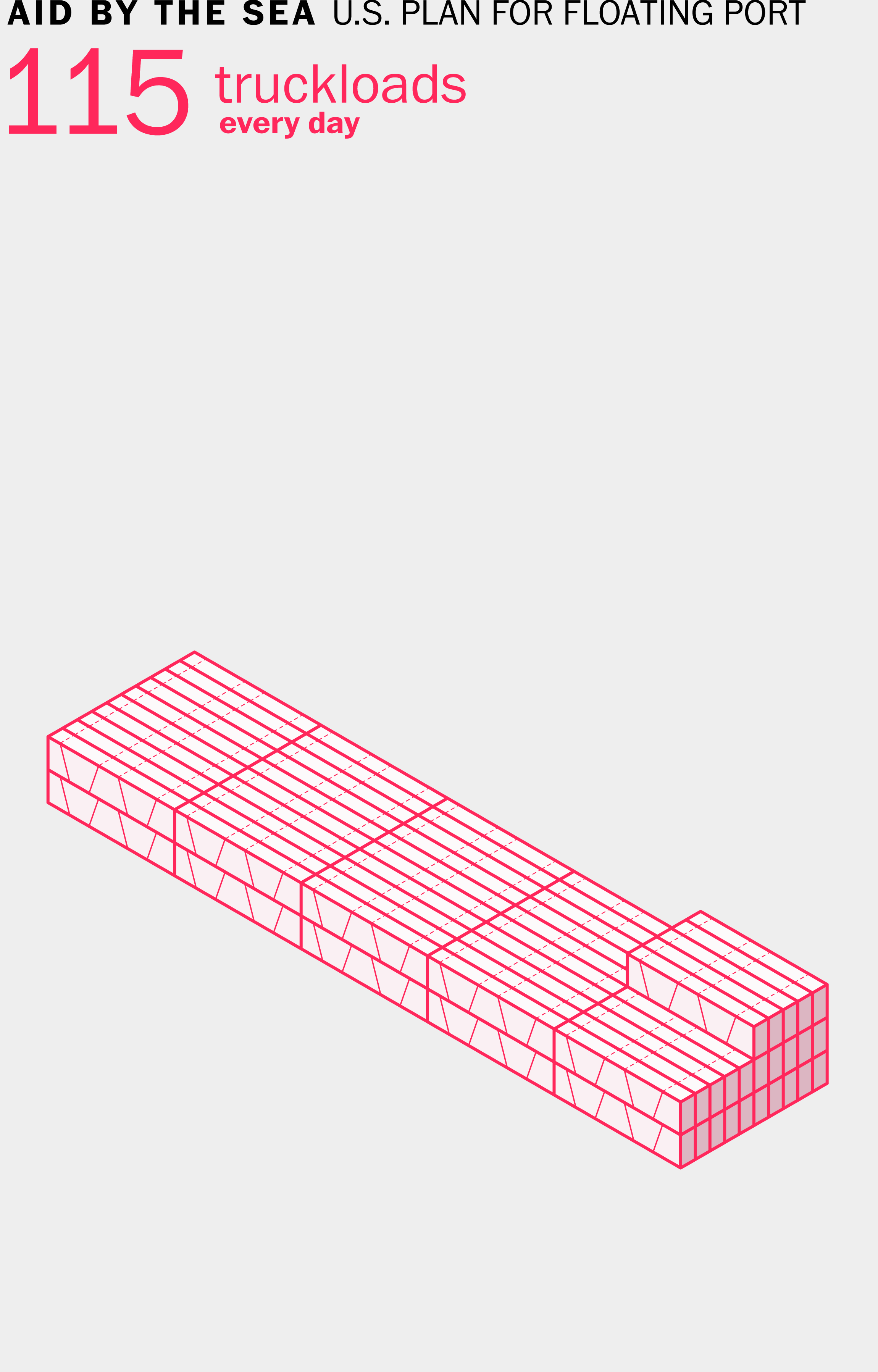
The Pentagon says it could deliver up to 2 million meals daily. That could mean about 1,700 tons a day — or 115 truckloads’ worth — of prepackaged meals, known as MREs, on pallets.

In recent months, countries including the United States, along with aid groups, have made more than 40 airdrops. While expensive, they often deliver only a few tons of aid at a time.
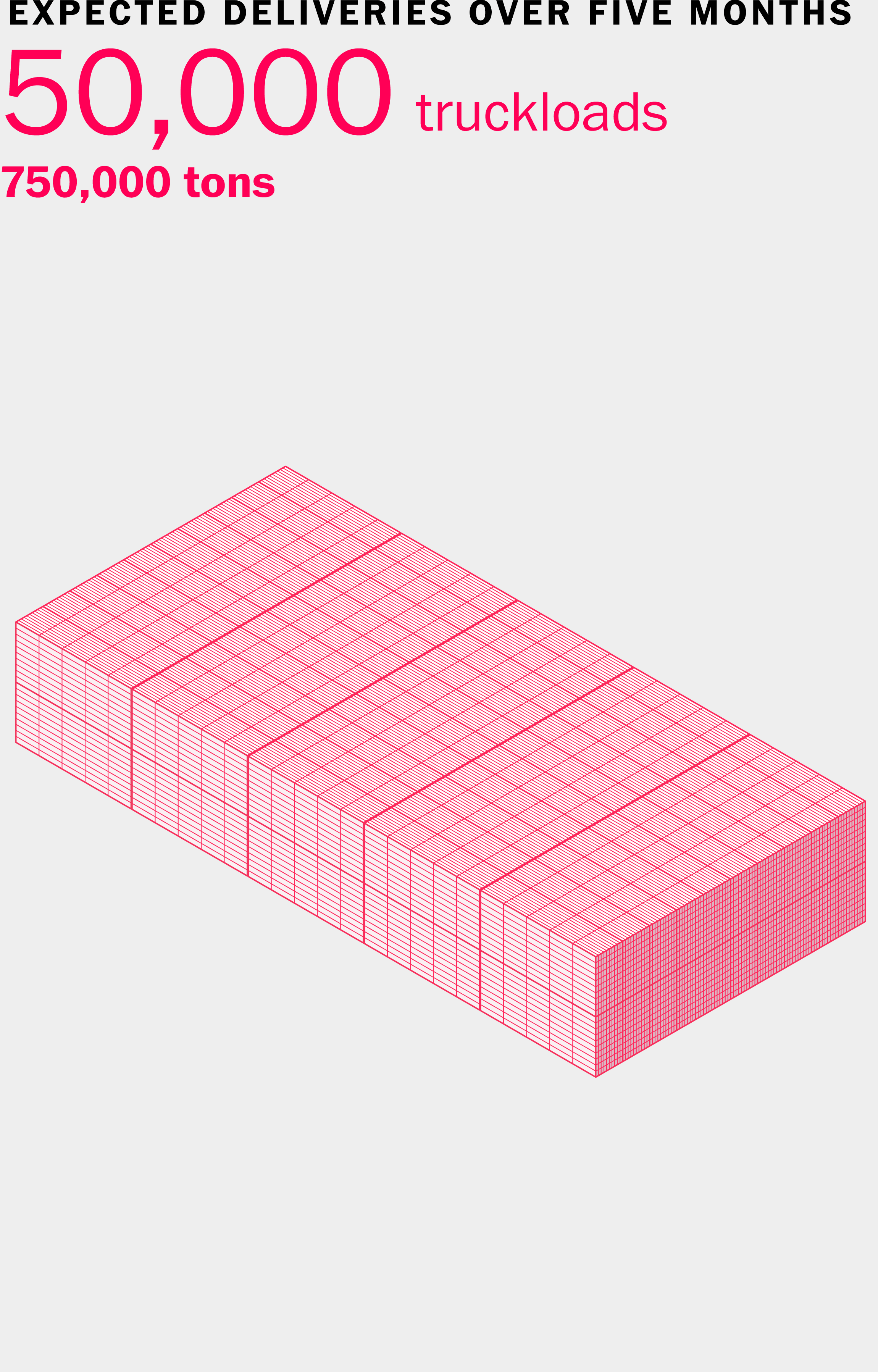
If average prewar levels had persisted, roughly 750,000 tons of supplies — including food, water, medical supplies and construction goods — would have been delivered since Oct. 7.
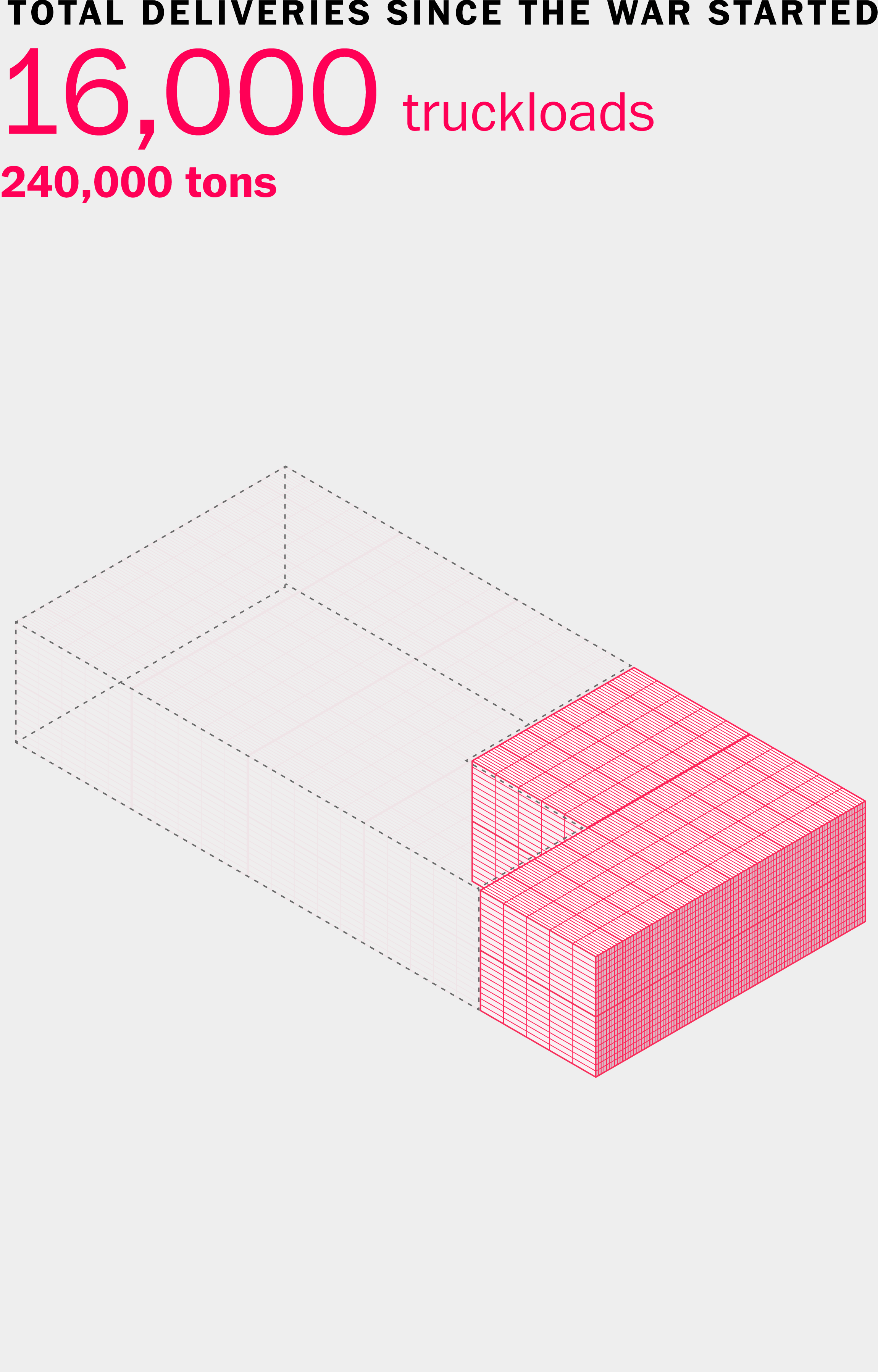
The supply deficit lost to the war may be about half a million tons. The majority of deliveries to Gaza are now food.
The workaround by sea
After Hamas’s Oct. 7 attacks on Israel, land deliveries to Gaza stopped as Israel announced a “complete siege” on the enclave in a bid to destroy the Palestinian militant group. “No electricity, no food, no water, no fuel. Everything is closed,” Defense Minister Yoav Gallant said on Oct. 9.
Following weeks of negotiation by the United Nations and others, Israel reopened the Rafah border crossing on Oct. 21 and the Kerem Shalom crossing in December. Trucks lined up after the crossings opened, but the average number of trucks entering Gaza per day fell by two-thirds. Aid groups said Israeli inspections slowed the pace to a crawl.
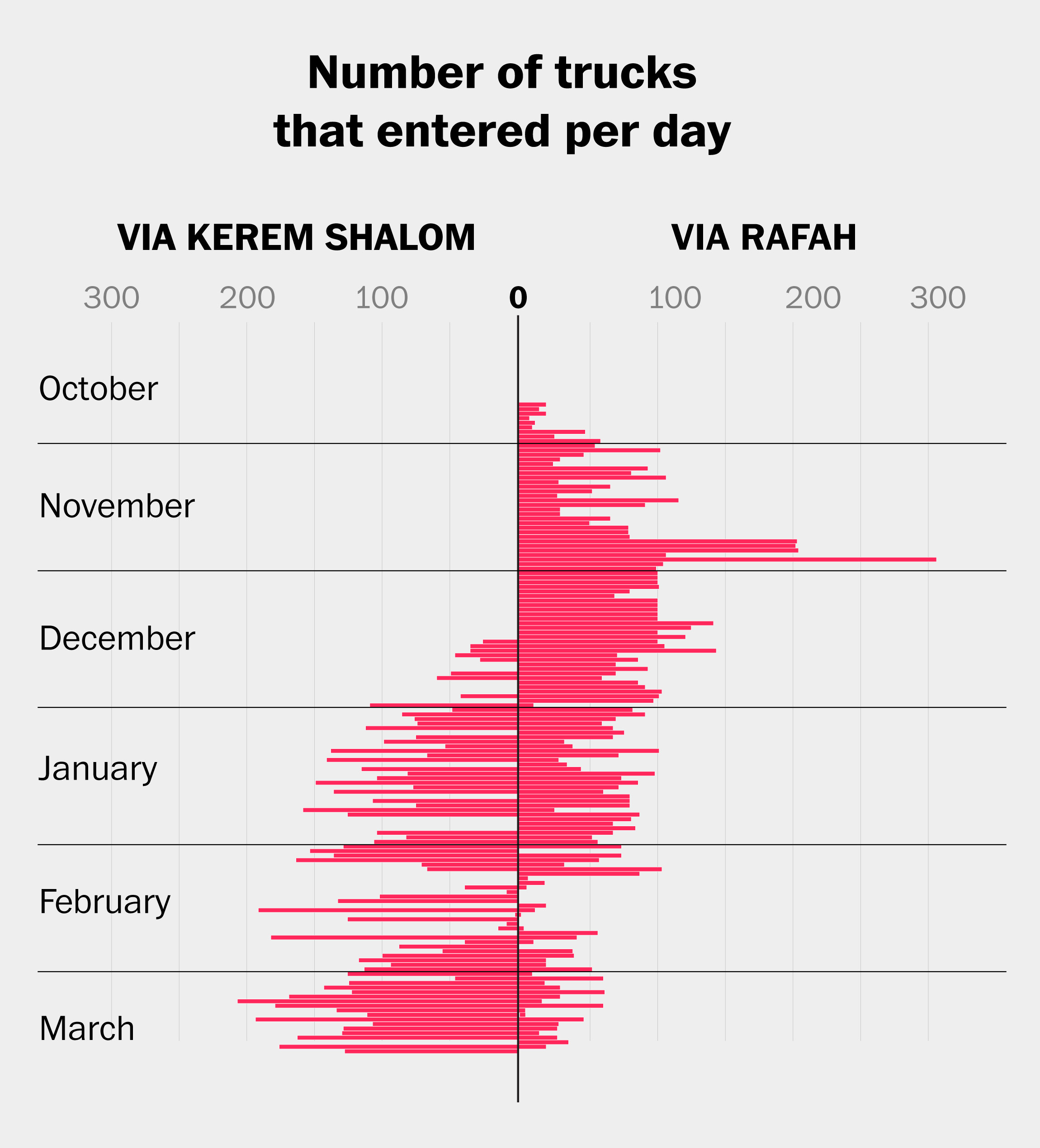
Under mounting pressure to get more aid through, President Biden announced earlier this month a U.S. maritime route. Joint Logistics Over-the-Shore, the name for the U.S. military system, has been used in other humanitarian disasters, including after the earthquake in Haiti in 2010. Israeli officials are to inspect aid for this maritime route in the Cypriot port of Larnaca.
World Central Kitchen and Open Arms have already sent aid by sea with the backing of the United Arab Emirates and the European Commission. World Central Kitchen is using a barge and jetty made of rubble. Chef José Andrés, the founder of World Central Kitchen, said he hopes to bring more aid in each future shipment.
These circumventions of the border chokepoints are no substitute for an increase in deliveries by routes that already exist, experts say.
Israel’s “very large” ports have enough capacity to meet Gaza’s needs, according to Asaf Ashar, an Israeli American maritime expert, who estimated that Palestinian aid requirements might make up 2 percent of Israeli port capacity.
However, only small amounts of aid for Gaza have passed through Ashdod, an Israeli port less than 25 miles from Gaza’s northern border, despite a push from U.S. and European officials to open the port for aid.
This month, Israeli authorities opened a crossing into northern Gaza, known as Gate 96. The crossing eased “the bottleneck that the international organizations tasked with distributing aid have created,” said Shimon Freedman, a spokesperson for COGAT, the Israeli military agency in charge of the Palestinian territories, at a news briefing, laying blame at the feet of the aid organizations, which in turn blamed Israel.
High cost, low reward
Airdrops avoid border delays and can reach Gaza’s north, to which deliveries by road remain difficult. However, they cannot come close to the scale of land- or sea-based deliveries.
Aid airdrops are often small, with some consisting of just three tons of aid — far less than the average load of a single truck.
Sean Carroll, president of the aid group Anera, said airdrops appeared to be very expensive — six to more than 100 times more so than the cost per ton of aid delivered by truck.
Witnesses told reporters that one crate that landed in Gaza in early March killed five people sheltering in a house after its parachute failed to open.
The maritime aid delivery route, while in theory more efficient, faces its own logistical and cost issues.
Salvatore Mercogliano, a history professor at Campbell University in North Carolina and a former merchant mariner, said the U.S. system could result in a “huge jump” in how much aid could reach Gaza. But “the question is going to be how much you can feed into the system,” he said.
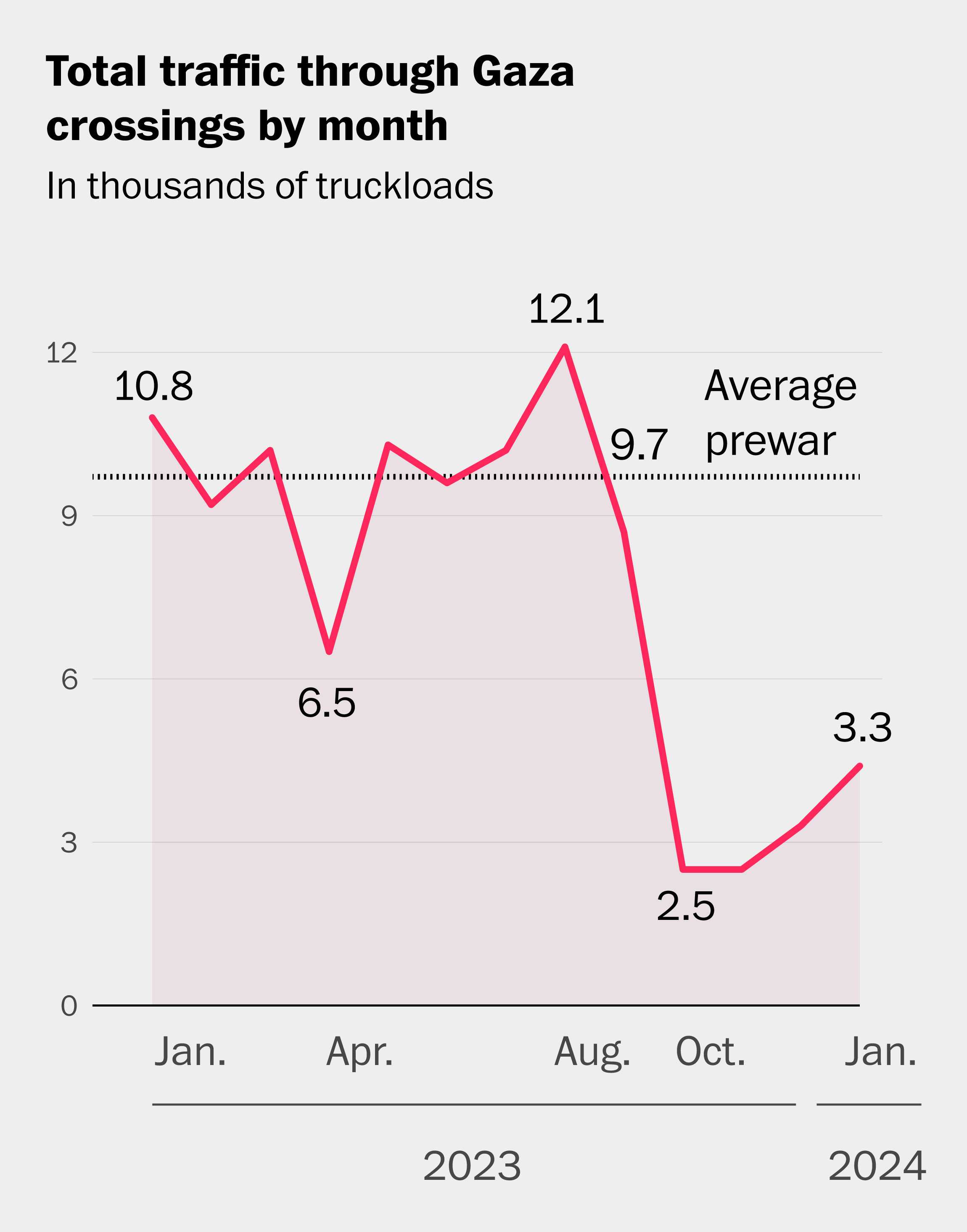
Such maritime aid missions typically involve troops onshore, but the Pentagon has said no U.S. service members will land in Gaza. Makeshift jetties and floating piers would operate subject to weather and would require maintenance.
“You’re in millions, if not — at the very least — tens of millions of dollars,” said Mercogliano of the costs of the U.S. mission. The Pentagon would not comment on how much the project was expected to cost.
Artur Galocha and Samuel Granados contributed to this report.
News Related-
Russian court extends detention of Wall Street Journal reporter Gershkovich until end of January
-
Russian court extends detention of Wall Street Journal reporter Evan Gershkovich, arrested on espionage charges
-
Israel's economy recovered from previous wars with Hamas, but this one might go longer, hit harder
-
Stock market today: Asian shares mixed ahead of US consumer confidence and price data
-
EXCLUSIVE: ‘Sister Wives' star Christine Brown says her kids' happy marriages inspired her leave Kody Brown
-
NBA fans roast Clippers for losing to Nuggets without Jokic, Murray, Gordon
-
Panthers-Senators brawl ends in 10-minute penalty for all players on ice
-
CNBC Daily Open: Is record Black Friday sales spike a false dawn?
-
Freed Israeli hostage describes deteriorating conditions while being held by Hamas
-
High stakes and glitz mark the vote in Paris for the 2030 World Expo host
-
Biden’s unworkable nursing rule will harm seniors
-
Jalen Hurts: We did what we needed to do when it mattered the most
-
LeBron James takes NBA all-time minutes lead in career-worst loss
-
Vikings' Kevin O'Connell to evaluate Josh Dobbs, path forward at QB
